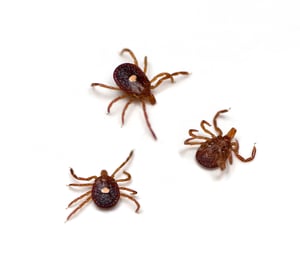Warmer climates are sending the lone star tick farther north than ever before, encroaching on New England.
As if deer ticks and dog ticks aren’t enough to worry about, we now have another disease-carrying pest to watch out for in our area: the lone star tick. This species of tick formerly did not venture farther north than New Jersey, but established populations have recently been found in New England, including Cape Cod and the Islands. Here’s what you should know about lone star ticks in Massachusetts.
- Why are they moving north? It is suspected that warmer temperatures have encouraged the lone star tick to expand its territory. Milder winters make more areas tick-friendly and extend their active periods. The lone star has recently been found in the Northeast, upper Midwest, and as far north as Canada.
- What do they look like? The adult lone star tick is relatively easy to identify. Females are reddish-brown in color with a white dot in the middle of the back. Males are dark brown, occasionally with patches of red and sometimes with white markings that are less distinct than that of the female.
- Do they carry diseases? The lone star tick is not known to carry Lyme disease, but don’t get too comfortable—they can spread STARI, a disease similar to Lyme; tularemia, a disease that causes flu-like symptoms and other effects that can be life-threatening; and alpha-gal syndrome, which causes an allergy to red meat. Nymphs and adult females are most likely to bite humans.
Research is underway to answer the thus-far-unsolved questions of what widespread control methods are best, and what hosts most commonly support lone star ticks. Until more is known about these arachnids, it’s best to take the same precautions recommended to protect yourself against deer and dog ticks.
We'll keep you posted as more information becomes available. In the meantime, call Burgess Pest for New England's most trusted mosquito and tick treatments and let us help Protect Your Pad.


